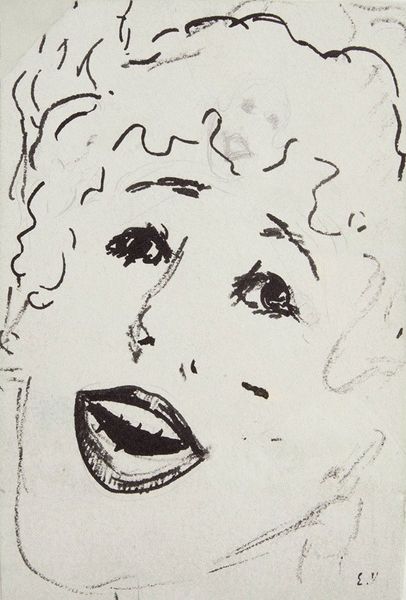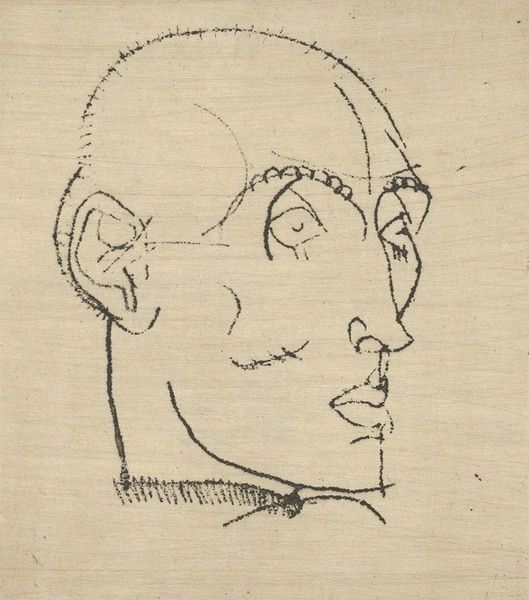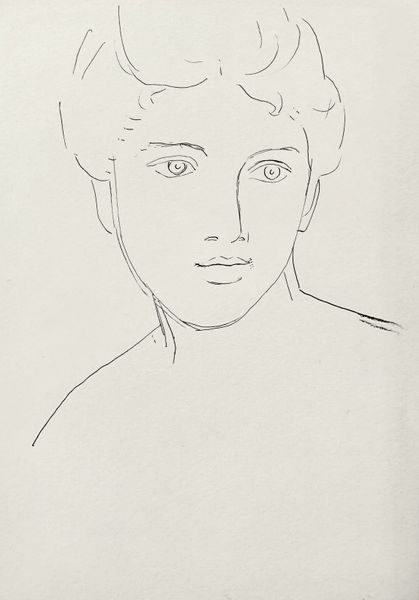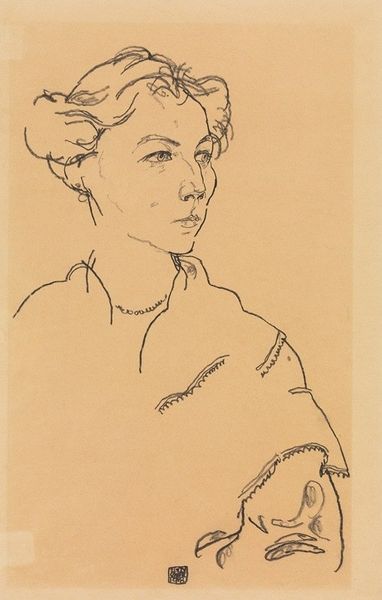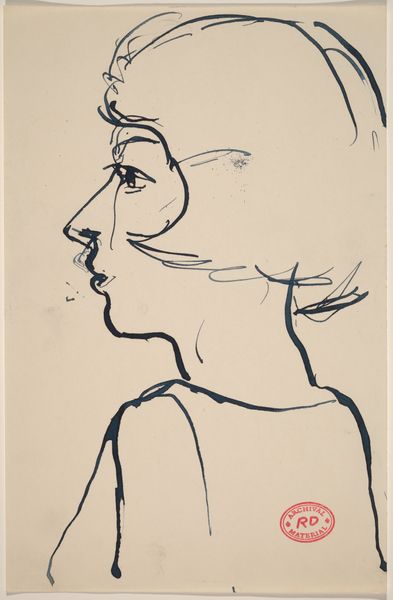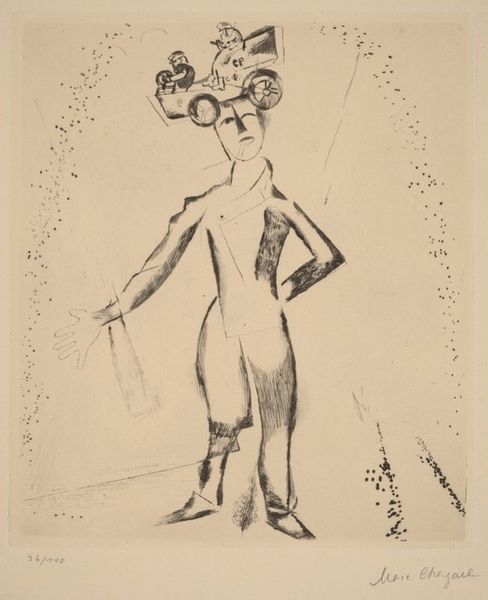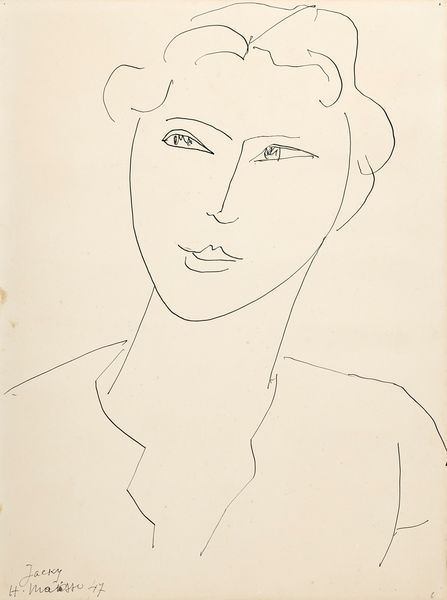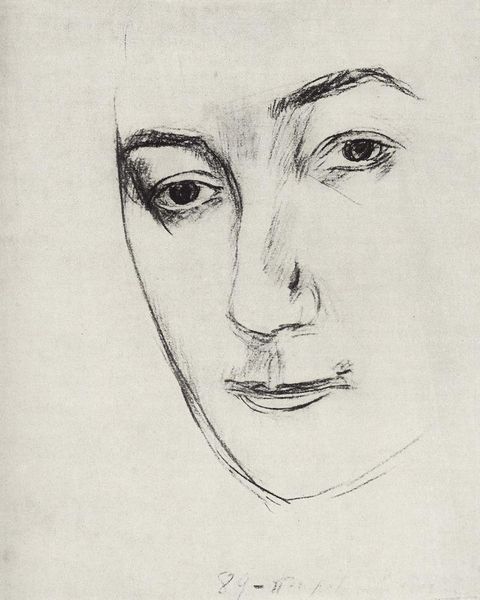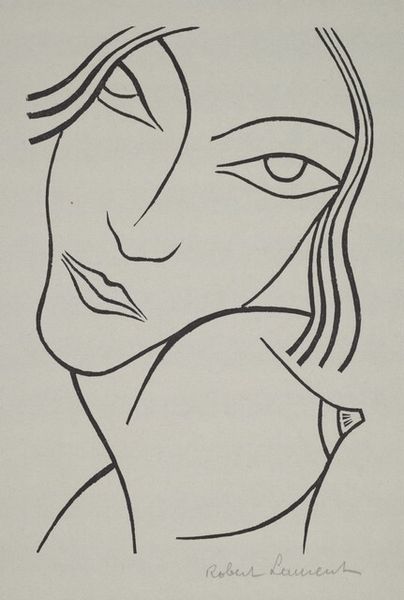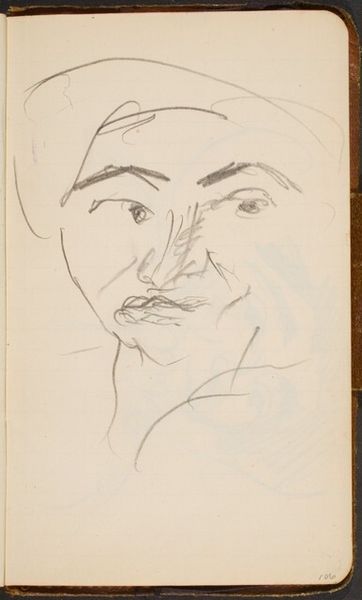
drawing, ink, pen
#
portrait
#
drawing
#
amateur sketch
#
facial expression drawing
#
head
#
face
#
pencil sketch
#
figuration
#
portrait reference
#
ink
#
animal drawing portrait
#
nose
#
pen
#
portrait drawing
#
facial study
#
facial portrait
#
forehead
#
portrait art
#
monochrome
#
digital portrait
Copyright: Alekos Kontopoulos,Fair Use
Curator: This intriguing drawing, entitled simply "Portrait," by Alekos Kontopoulos, pulls us in with its stark simplicity. It’s rendered using pen and ink, it seems. My first thought is, well, it looks kind of… unsettled? The lines are so decisive, yet there's a vulnerability. Editor: Unsettled, yes, and I immediately look to the hand. We're seeing a portrait stripped to bare essentials in process. Consider the material reality: pen and ink – immediate, unforgiving media. We witness the artist's choices directly, with no layers to conceal second thoughts. I’m also compelled to wonder what kind of paper this is rendered upon and who processed it, what's its cost relative to the community where this was created? Curator: You’re right, there's little room for fudging with ink. To me, that rawness is precisely what makes it so captivating. The sitter’s gaze follows you around the room, almost challenging you to look away. There's such an emotional intensity captured in such spare lines! Did the quick, dark strokes express his confidence, or his uncertainty? The economical means give it real directness. Editor: That tension you feel between "confidence" and "uncertainty," might reveal a lot about how the final market perceives it. And who consumes it. The visible texture of the paper adds another layer. Was it chosen specifically, was it simply available to the artist? These economic and cultural decisions shape what you call "intensity". Furthermore, that minimalist choice might even amplify a subtle message regarding accessibility to art. Curator: I like that, the idea of access here. Yes, and even more so, it makes me think about what it means to truly see someone. Kontopoulos captures an essence rather than a likeness. It suggests seeing goes beyond representation. And is he present through this "Portrait" in our cultural imaginary. It asks: Where are Kontopoulos other pieces? Editor: Right! It makes us question value, labor and artistic intent when these considerations become a direct element to consider as being, "enough", in a piece of artwork that can still speak across contexts and generations. Curator: Agreed. So much to contemplate in these seemingly simple lines. It reminds us to look closer, both at the artwork, but at the person gazing back at us too. Editor: Indeed, and maybe ponder the hidden economies embedded within even the most "minimalist" portrait we encounter.
Comments
No comments
Be the first to comment and join the conversation on the ultimate creative platform.
